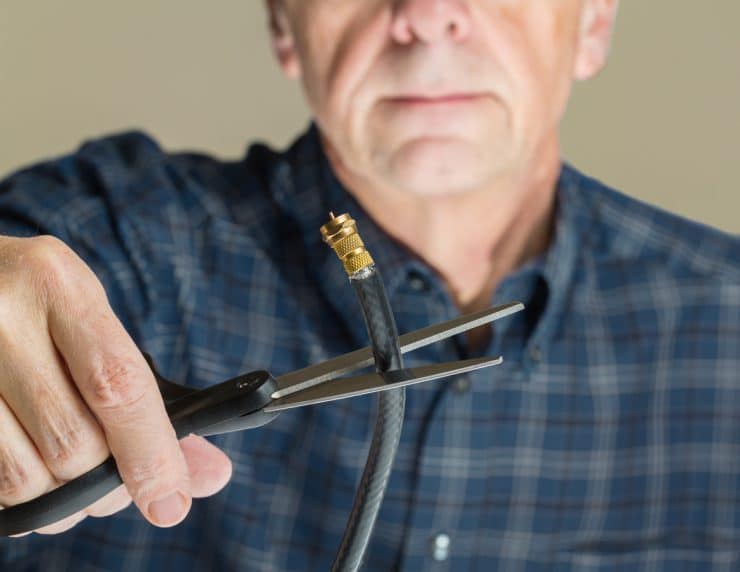“Cutting the cord” can sound ominous, but these days the phrase usually means ditching pay-TV service, and saving big money on cable costs. The average American spends $107 a month on cable, according to data from Leichtman Research Group, and the majority of pay-TV subscribers (70%) feel they get too little value for their money, per Deloitte’s 2018 Digital Media Trends Survey.
Folks who cut the cord most often use streaming services to fill their entertainment void, and many experts argue that these services offer an even greater variety of content than traditional cable services. “Today, consumers have more choices for video than they’ve ever had, and they’re exercising those choices.” says Bruce Leichtman, president and principal analyst for Leichtman. But while the power of all this choice may be freeing, it can be stressful if you don’t know where to start. Here’s everything you need to know if you’re considering cutting the cord.
Will you save?
“Canceling cable in favor of streaming services can certainly save money. But whether and how much a person saves will vary depending on their situation and priorities,” says Stephen Lovely, writer for Cordcutting.com. “I generally endorse cutting the cord, but I don’t think anyone can say that cord cutting definitively is or isn’t worth it. It’s really a case-by-case thing.”
It’s true. Many of us have rapacious viewing desires, and to cover them you might need multiple streaming services, particularly if you live in a household of folks with varying interests. Today, there are about 35 million cord cutters, and of those, 7 million subscribe to live TV streaming services. But, “the vast majority of cord cutters subscribe to fewer than 4 streaming services,” says Luke Bouma, owner of Cord Cutter News. With that said, a couple of affordable subscriptions like Hulu ($5.99 per month) and Netflix (12.99 per month) might be sufficient for you — if you are content living without live TV. “If you can’t live without live TV, though, those streaming services generally cost at least $45 a month — so, right away, your savings are slashed,” says Lovely. “Cord cutting is mostly just a budgeting decision. You just have to decide what you can’t live without, and how to get it most cheaply.”
Do your homework.
“The number one mistake people make is they call and cancel cable, and then they try to figure out what to do next,” says Bouma. Cutting the cord takes advanced planning and personalization. If you’re thinking about cutting the cord, grab some paper and jotting down the shows, channels, and events that you want to be able to watch. Then do a quick Internet search on how to access them without pay-TV. “From there, you’ll see what you’d need to replace cable with, and you’ll probably be able to tell pretty quickly if you’re going to get a good deal,” says Lovely. “If you only have cable for Sunday NFL games, for instance, you’ll see that you can get those for free with an antenna, and you’ll realize cutting the cord is a no-brainer for you. But if you end up with a list of 80 different cable-only networks, then there’s your answer!”
Lovely cautions that there may also be some one-time expenses associated with cord cutting, too, like upgrading your TV with a streaming media player. Or buying an antenna, which is a move growing in popularity — though what channels you’ll get through it depends on where you live.
You might pay more for internet.
Streaming — which you’re probably already doing even if you still subscribe to cable — requires a high-speed Internet connection. Per the Deloitte survey, about 56% of pay-TV customers say they keep their cable subscription because it’s bundled with their home broadband internet. That makes some sense; it’s convenient getting one bill for TV, internet, and home phone services, and bundles often provide a discounted rate for internet service.
When you de-bundle, and drop pay-TV, it may mean you end up paying more for your Internet, because you’re losing the financial incentives of your bundle, Leichtman cautions. But this won’t necessarily offset the financial benefits you’d get from de-bundling to cut the cord. And, you can of course try negotiating with your provider for a lower internet price; some expert haggling might pay off. Your best leveraging tool is your value as a customer. Be outrageously polite to the representative you speak with on the phone, and make it clear you’re ready to cancel and take your business elsewhere. They might just dish out some unexpected deals to keep you.
With Molly Povich






